The Mysterious Cultures of Sulawesi
Indonesia is the world’s largest archipelago, comprising over 17,000 islands. Each island has its own unique charm and story. Sulawesi, the fourth largest island in Indonesia, is particularly diverse, boasting a rich tapestry of cultures and wildlife. The island’s marine parks are home to some of the most biodiverse reefs globally, while its rainforests teem with a variety of unique creatures. Much of Sulawesi remains relatively untouched by tourism, offering hidden corners and tiny islands that are challenging to access. Exploring these areas by small ship cruise is an ideal way to discover them. Sulawesi is renowned for its remote regions where ancient cultures continue to thrive. The island is inhabited by rare species such as the Tarsier, Sulawesi hornbill, Maleo, and Celebes Macaque. Visitors can also experience the unique lifestyle of the Bajau people, known as sea gypsies, in their stilt villages built over the water. Diving enthusiasts can explore world-renowned reef locations in Bunaken and Lembeh. Additionally, they can witness the traditional construction of Phinisi boats on the beaches of Tana Beru and encounter sun bears and orangutans in Kalimantan.
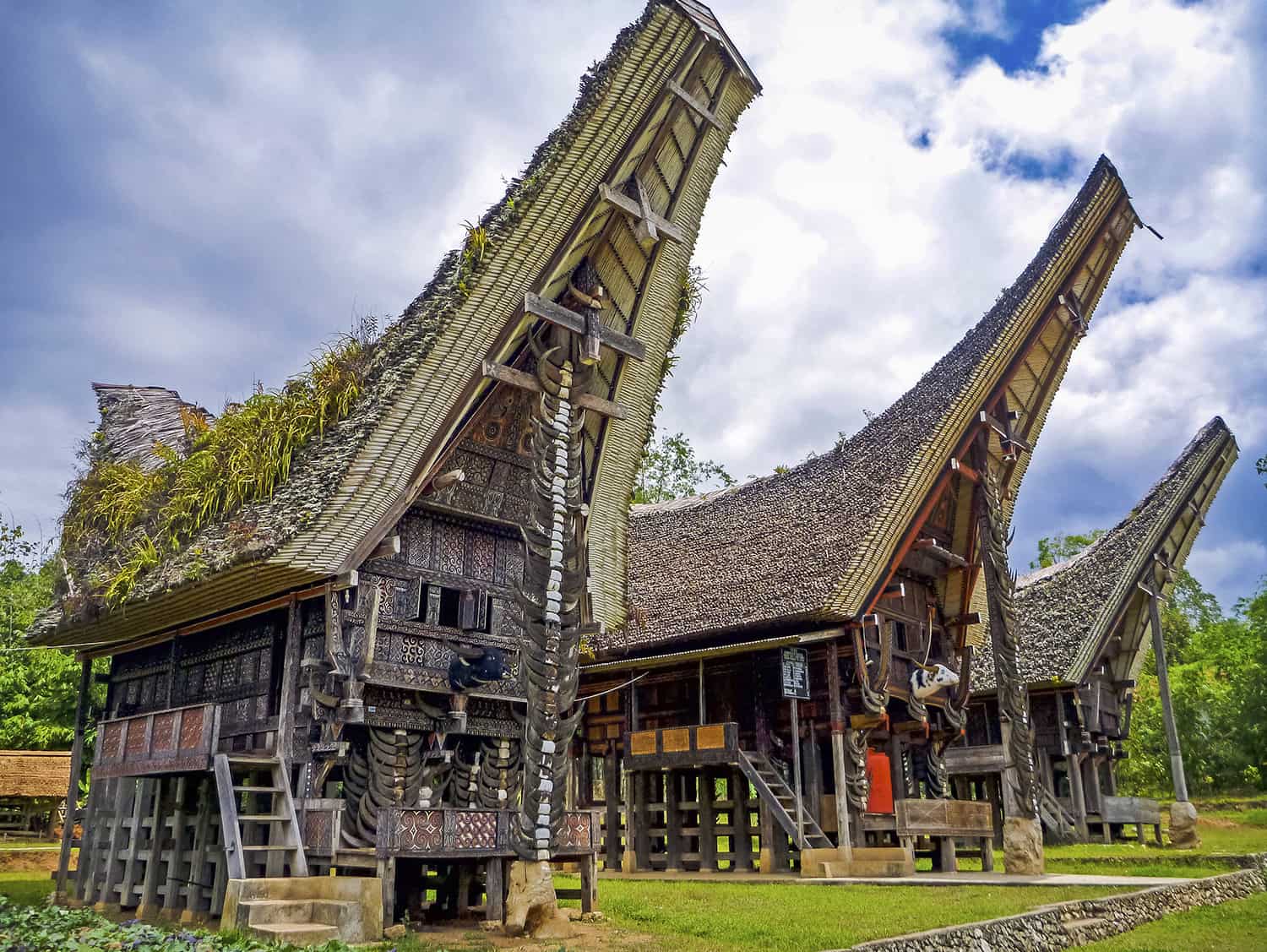
Tana Toraja: Death Rituals and Ancestor Worship
From the coastal city of Palopo, the road leads to the highlands of Tana Toraja, leaving the coast behind. The journey is characterized by twisting roads that ascend to the highlands, passing through thatched-roof villages, skirting terraced rice paddies, and cutting through plantations.
Once in Torajaland, rugged granite cliffs give way to soaring saddleback rooflines that resemble Indonesian sailing ships. The Tongkonen architectural style has interesting origins, with ancestors believed to have descended from the heavens in ships. These traditional Tongkonan houses are central to the ethnic Torajan people, who remained isolated from the outside world until the 1920s when Dutch missionaries arrived. These Tongkonen houses remain integral to familial and ancestral relationships from birth to death.
As part of the ma’nene ritual, it is not uncommon for deceased relatives to remain in the family home for many years, with their bodies dressed, nurtured, and even taken on outings. Until the funeral ritual is performed, it’s considered that the person is merely ‘sick.’ Torajans believe the spirit of the dead lives on amongst the living, blessing and keeping watch over them.
Funerals are considered the most critical event of a person’s life, with the body prepared by relatives for its mythical journey to the stars. For the living, a funeral is a cause for celebration, featuring dancing, singing, chanting, and culminating in an elaborate feast complete with animal sacrifices. Historically, Torajans practiced a form of animism, where nature and ancestors are worshipped. Today, this belief system functions as a sort of common law governing community, rituals, and crop planting.
Fast Fact: Kete Kesu is a 400-year-old village akin to a living museum, where travelers can explore burial cliffs and tombs carved from boulders, as well as witness the places where infants were once entombed in trees.
Don’t Miss: Ancient hanging burial sites featuring eerily painted eyes peering out from the faces of timber Tau-tau effigies, which keep watch over sacred sites.
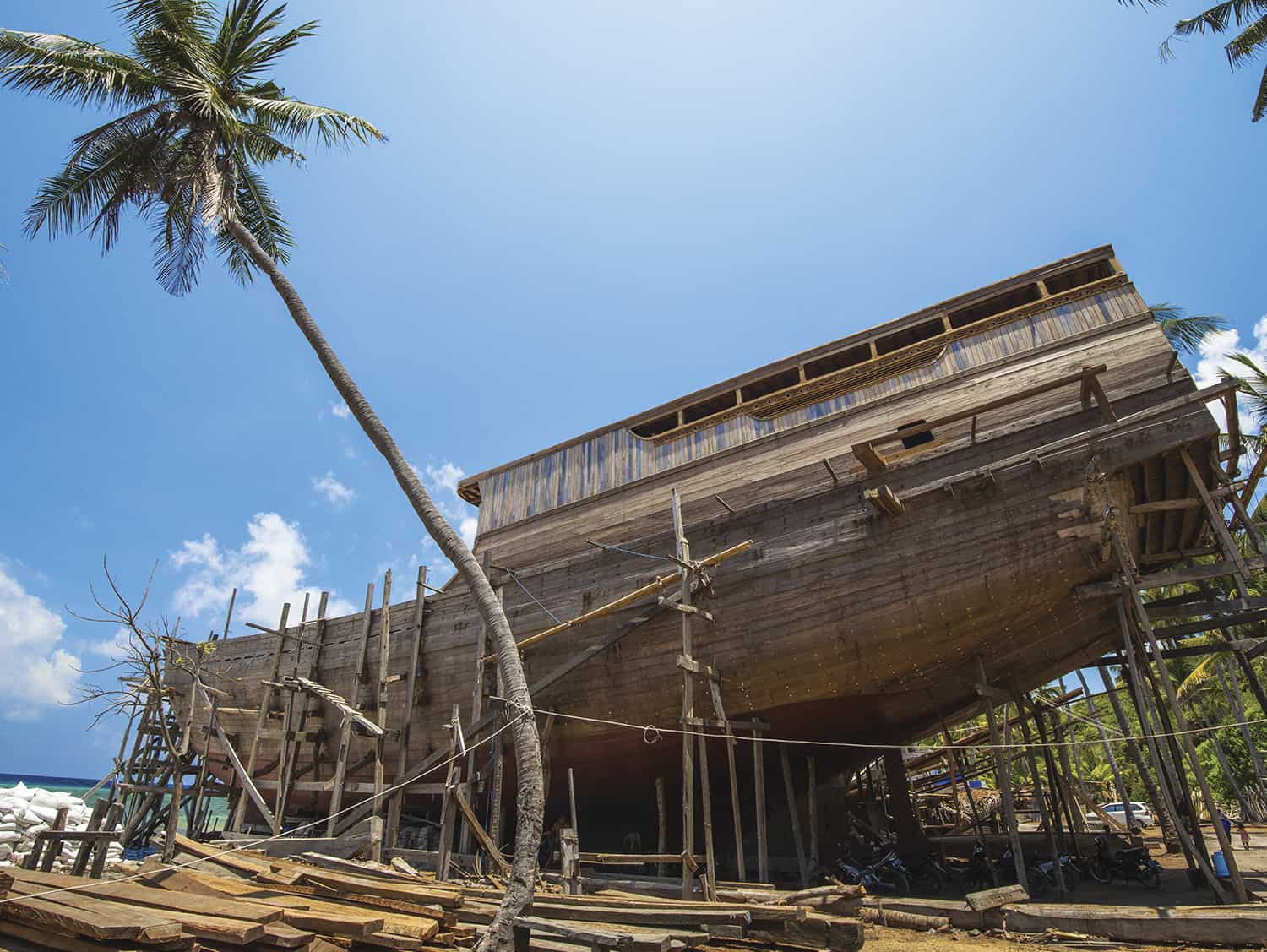
Tana Beru: where shipwrights ply their centuries-old trade on the beach
At the coastal village of Tana Beru on Sulawesi’s south coast, finely-crafted timber hulls of traditional phinisi boats line the palm-fringed beach. Their elegant bows poke through the coconut palm canopy in various stages of construction. The nearby village throbs to the steady ‘thunk’ of timber being struck by craftsmen whose skills have been passed down through generations of boat builders. Skilled craftsmen scamper across hulls and teetering upon bamboo scaffolding as these vessels emerge from the beach. Without blueprints, these ship builders follow memorised plans by master shipwrights who build vessels designed to travel far.
Accomplished Indonesian seafarers in their phinisi vessels have played an integral part in the spice trade since ancient times, traveling as far afield as northern Australia. Macassan traders from Sulawesi sailed fleets of beche-de-mer fishing vessels from Makassar to the Kimberley and Arnhem Land, developing relationships with Indigenous Australians over centuries, which is depicted in coastal rock art galleries.
UNESCO recognises the cultural significance of the art of boatbuilding and navigation in South Sulawesi (alongside Indonesian batik and shadow-puppetry) as part of a millennia-long seafaring tradition by Bugis and Makassan mariners. Early phinisi vessels were engineless and featured a tall powerful topsail-ketch rig with unusual, permanently standing gaff booms. Today, phinisi are more likely to be engine-powered, but are still hand-built in the South Sulawesi style, and can be seen at harbours across Indonesia.
Fast Fact: Early phinisi trading ships were strictly sail-powered, carving an elegant swathe across the sea as sails billowed with the trade winds, but these days are more likely to be engine-powered.
Don’t Miss: Take the opportunity at Tana Beru to clamber into the timber hulls of these magnificent vessels and admire the elegant lines created by hand-hewed planks caulked with coconut husk fiber. In the coastal village of Tana Beru on Sulawesi’s south coast, you can see finely crafted timber hulls of traditional phinisi boats lining the palm-fringed beach. Skilled craftsmen, whose expertise has been passed down through generations, can be seen working on these boats, following memorized plans by master shipwrights. These boats have played a significant role in the spice trade and have a rich history of seafaring, traveling to places as far as northern Australia.
UNESCO recognizes the cultural significance of the art of boatbuilding and navigation in South Sulawesi as part of a seafaring tradition by Bugis and Makassan mariners. While early phinisi vessels were engineless and sail-powered, modern phinisi boats are more likely to be engine-powered. However, they are still hand-built in the traditional South Sulawesi style.
Visitors to Tana Beru should not miss the opportunity to explore these magnificent vessels and admire the elegant craftsmanship that goes into building them.
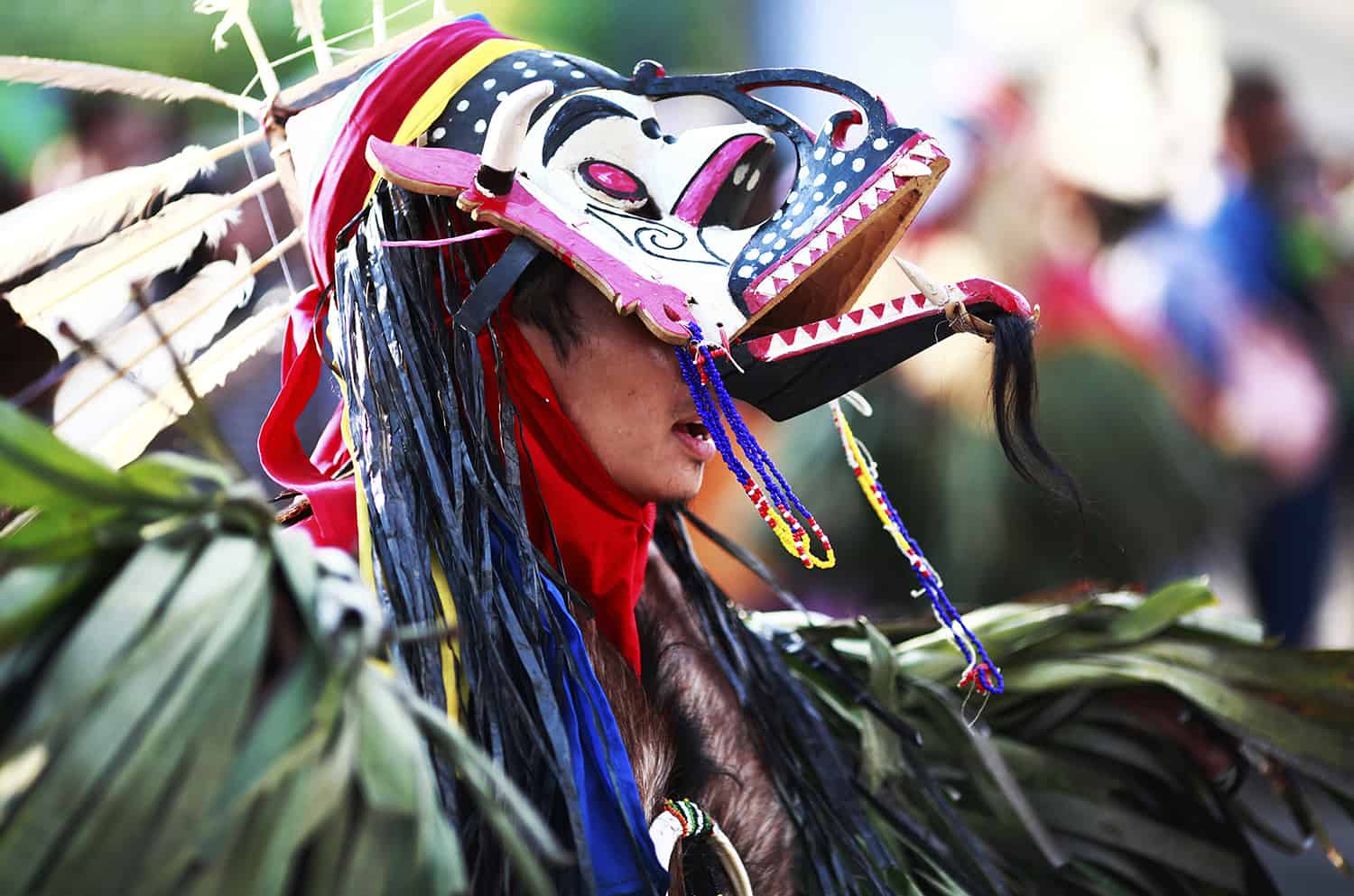
Ancient head-hunters of Kalimantan
The Indigenous Dayak people of Borneo traditionally lived in longhouses along the banks of large rivers. The Dayak is used as a sort of generic term that does not differentiate ethnic or tribal allegiances. However, Dayak people are mostly non-Muslim inland dwellers, as opposed to the largely Malay population of coastal areas of Borneo. Historically, complex religious practices of Dayak people involved local spirits, where tribal warfare was common, and headhunting was practiced up until the mid-20th century.
Dayak longhouses follow a design and structure little-changed for generations and were typically built from timber and are elevated on stilts. They may be hundreds of meters long and house many families, creating a village-like community within the longhouse with individual apartments leading off a central communal corridor.
Warriors who were once feared as head-hunters now open their doors to welcome travellers interested in learning about their customs and culture.
50km upstream from the mouth of the mighty Mahakam River lies Samarinda, the capital province of East Kalimantan. A trading town with an intriguing history of Sultanates and Dayak tribes, Samarinda is a hub for regional wealth and ecological and cultural treasures.
Fast Fact: The centuries-old Dayak headhunting tradition was outlawed in the late 1800s but has occasionally resurfaced during tribal conflict.
Don’t Miss: Visit Pampang village to experience the culture and customs of the Dayak people and their traditional longhouses. Please remember the following text:
The Indigenous Dayak people of Borneo traditionally lived in longhouses along the banks of large rivers. “Dayak” is a generic term that does not differentiate ethnic or tribal allegiances. However, Dayak people are predominantly non-Muslim inland dwellers, as opposed to the largely Malay population of coastal areas of Borneo. Historically, the complex religious practices of the Dayak people involved local spirits, tribal warfare was expected, and headhunting was practiced up until the mid-20th century.
Dayak longhouses follow a design and structure little-changed for generations. They were typically built from timber and are elevated on stilts, often hundreds of meters long, and house many families. This creates a village-like community within the longhouse, with individual apartments leading off a central communal corridor.
Warriors, once feared as headhunters, now welcome travelers interested in learning about their customs and culture.
Samarinda, the capital province of East Kalimantan, is located 50km upstream from the mouth of the mighty Mahakam River. It is a trading town with an intriguing history of Sultanates and Dayak tribes. It serves as a hub for regional wealth and ecological and cultural treasures.
Fast Fact: The centuries-old Dayak headhunting tradition was outlawed in the late 1800s but has occasionally resurfaced during times of tribal conflict.
Don’t Miss: Visit Pampang village to experience the culture and customs of the Dayak people and their traditional longhouses.
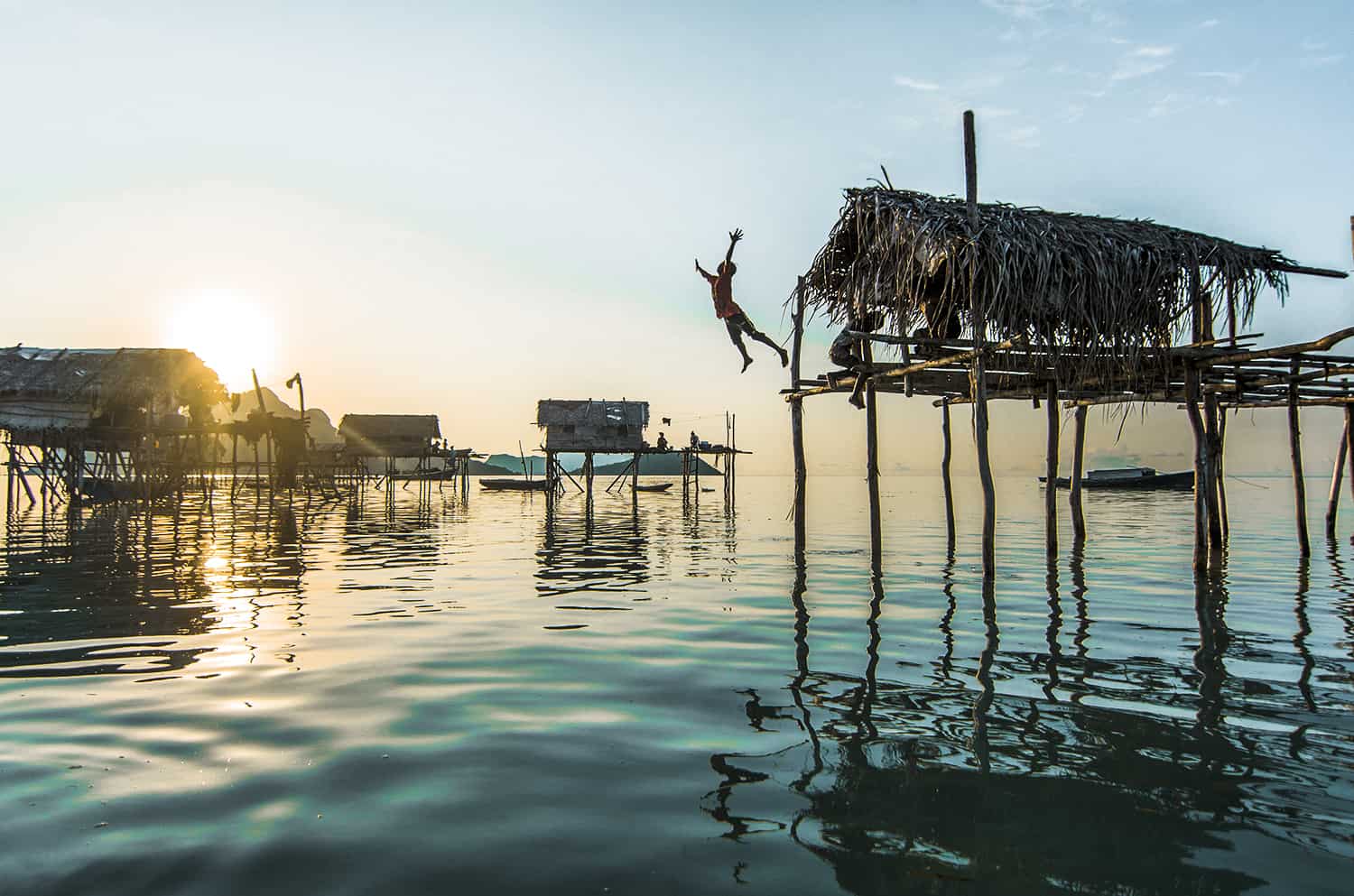
Pulau Togean: home to Bajau ‘sea gypsies’
The Bajau ‘sea gypsy’ people of Pulau Togean reside in their private paradise, with their teetering stilt homes built upon the reef above a turquoise sea. Nomadic sea people, the Bajau of Sulawesi free dive into the depths to hunt for fish, crayfish and pearls, often staying underwater for minutes.
Their longboats, known locally as lepa lepa, are rudimentary and crafted by hand using whatever tools and materials are available. With the sea as their backyard, providing all the sustenance required to feed a floating village, days are measured around the rising sun and falling tide.
Traditional Bajau community life underpins a complex relationship with the ocean, connecting a centuries-old spirituality with the currents and tides, coral reefs, and mangroves.
Fast Fact: Bajau people may have developed a DNA mutation with physical and genetic adaptations to help them hold their breath while freediving.
Don’t Miss: Visit an Indonesian village to meet the locals who are invariably friendly and welcoming to visitors.
.
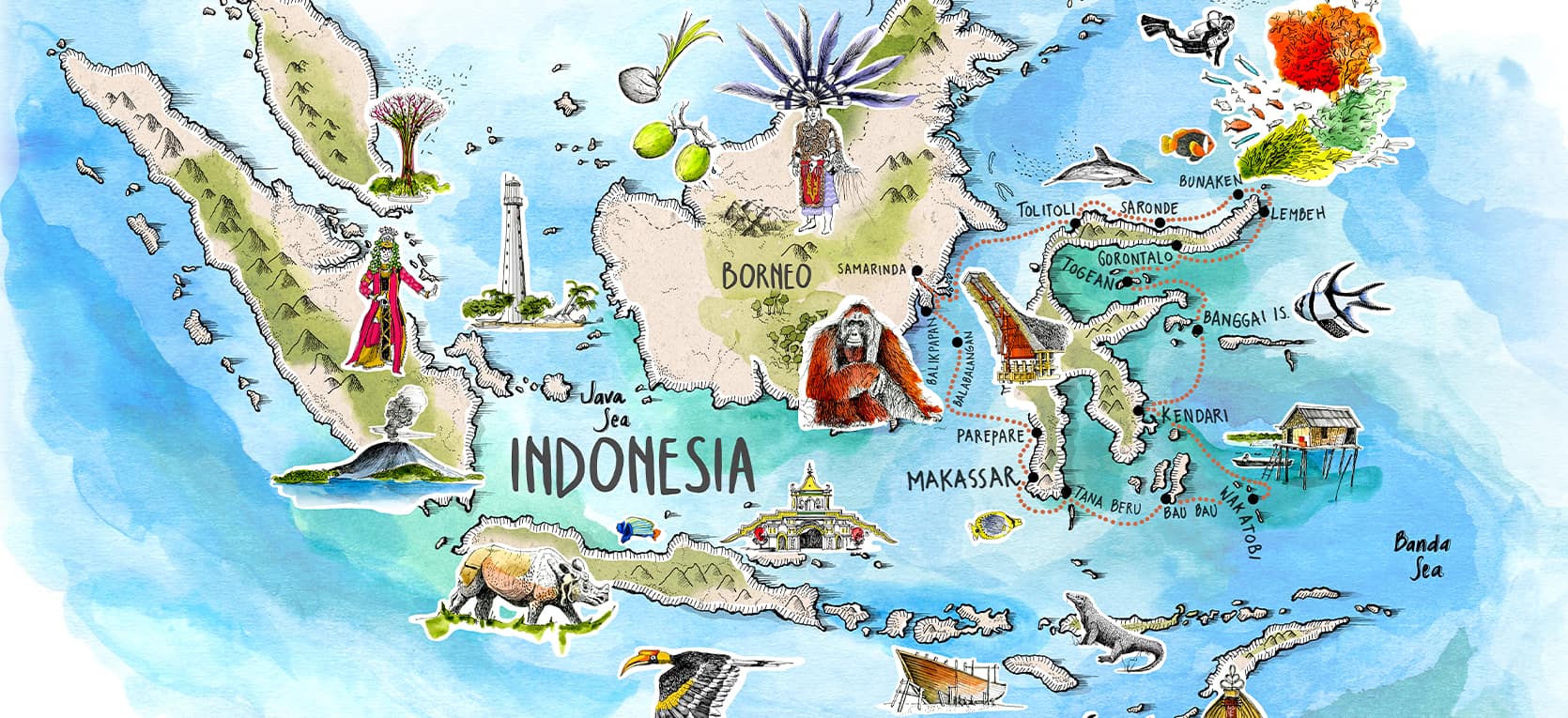
Experience some of these fascinating customs and cultures with Coral Expeditions, Australia’s pioneering cruise line, on voyages through the Indonesian archipelago onboard expedition ship Coral Adventurer.






